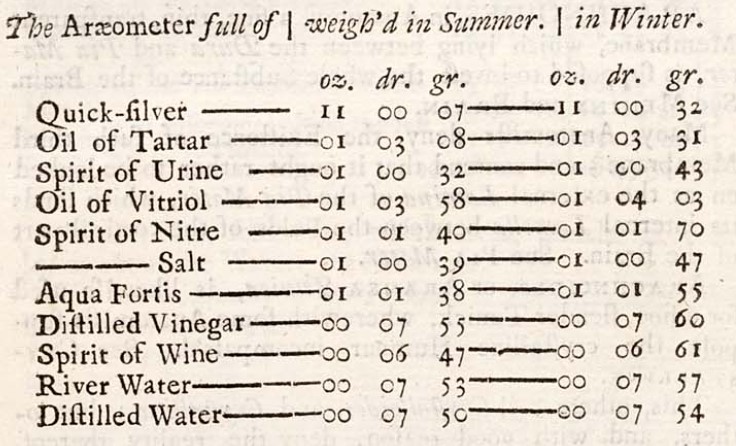The ARÆOMETER, or Water-poise, is usually made of glass; consisting of a round hollow ball, which terminates in a long slender neck, hermetically sealed at the top. There being first, as much running mercury put into it, as will serve to balance or keep it swimming in an erect position. The stem is divided into degrees; (as represented in Tab. Miscellany, fig.18.) and by the depth of its descent into any liquor, its lightness is concluded; for that fluid in which it sinks least, must be heaviest; and that in which it sinks lowest, lightest. See WATER-POISE, etc.
M. Homberg has invented a new aræometer, described in Philos. Transact. N° 262. thus: A (fig. 19.) is a glass bottle or matrass, with so slender a neck, that a drop of water takes up in it about five or six lines, or ⅛ of an inch. Near that neck is a small capillary tube D, about six inches long, and parallel to the neck. To fill the vessel, the liquor is poured in at the mouth B, (which is widened to receive a funnel) until it runs out at C, that is, until it rises in the neck to the mark C, by which means you have always the same bulk or quantity of liquor; and consequently, by means of the balance, can easily tell, when different liquors fill it, which weighs most, or is most intensely heavy.
Some regard, however, is to be had to the season of the year, and degree of heat and cold in the weather: by reason some liquors rarefy with heat, and condense with cold, more than others; and accordingly take up more or less room. See SPECIFIC GRAVITY, RAREFACTION, etc.
By means of this instrument, the ingenious author has made a table, to show the different weights of the same bulk of the most considerable chemical liquors, both in summer and winter; as follows:

The instrument itself weighed, when empty, one dram twenty-eight grains.
